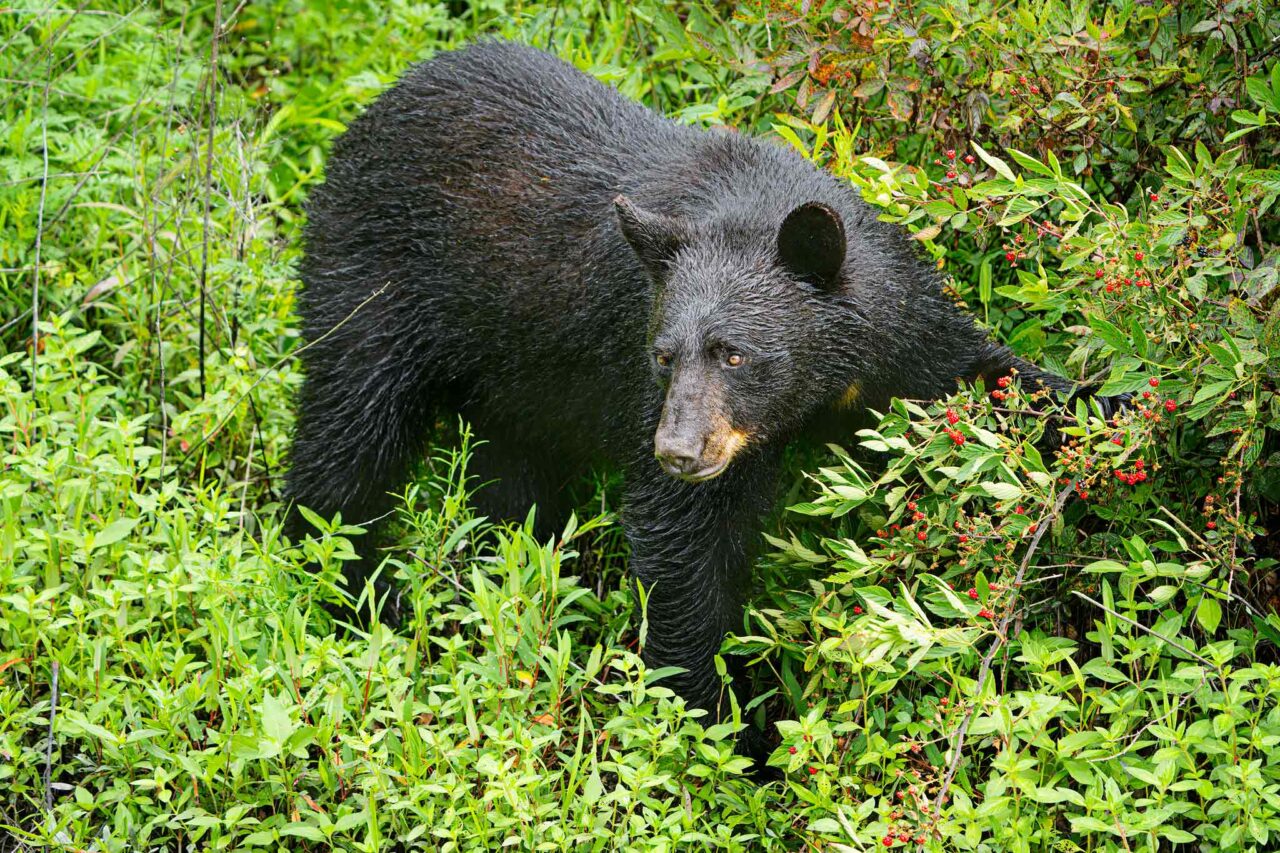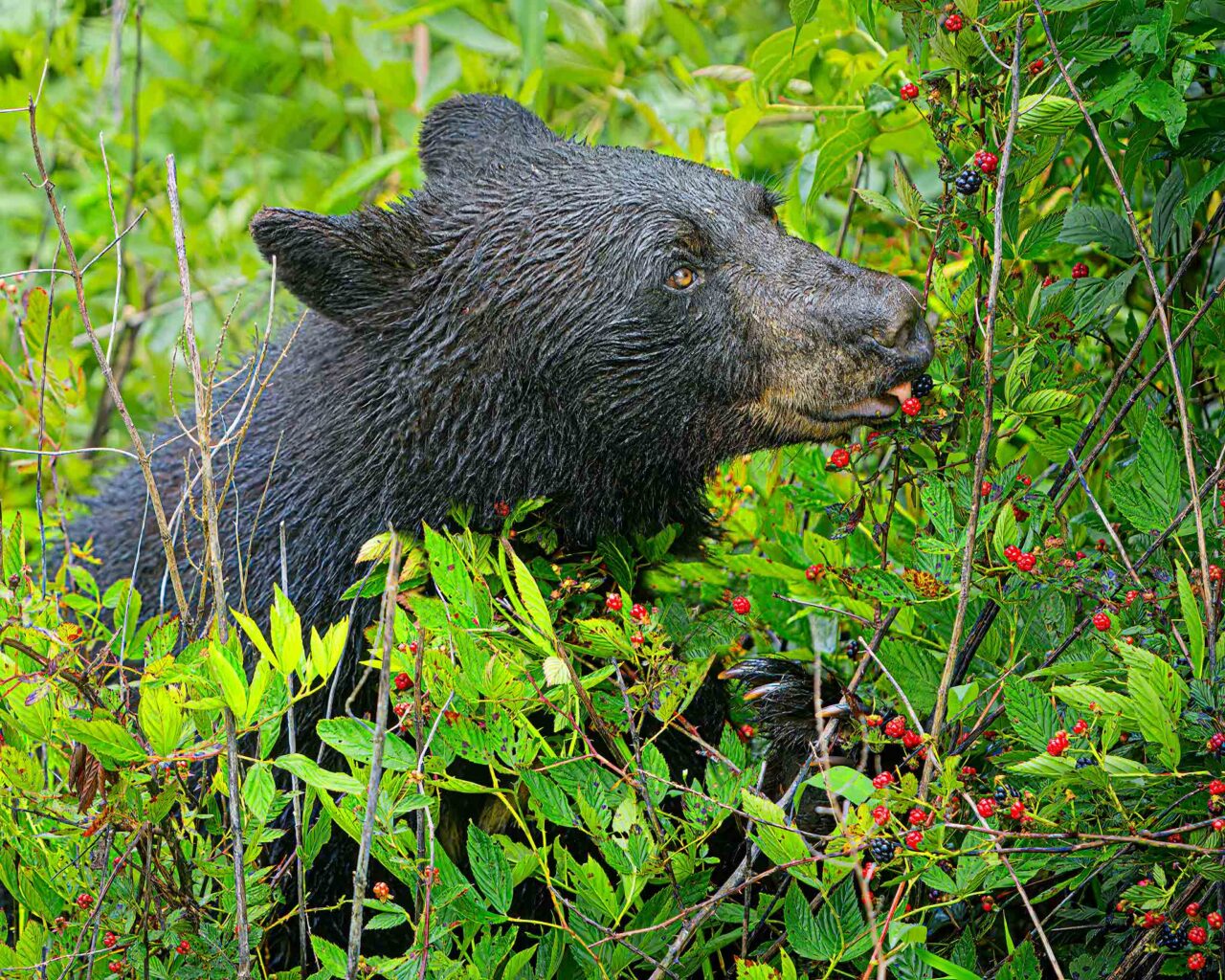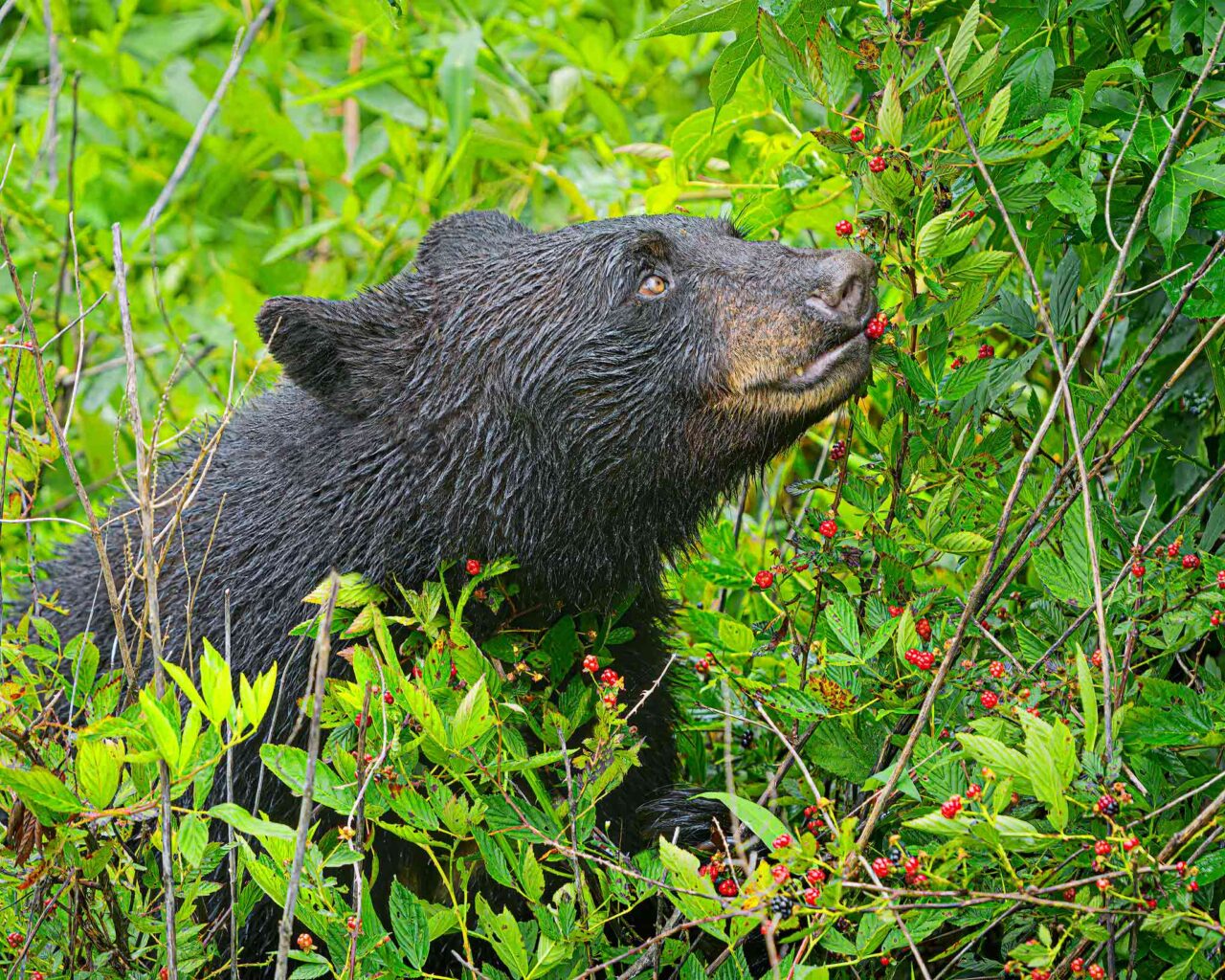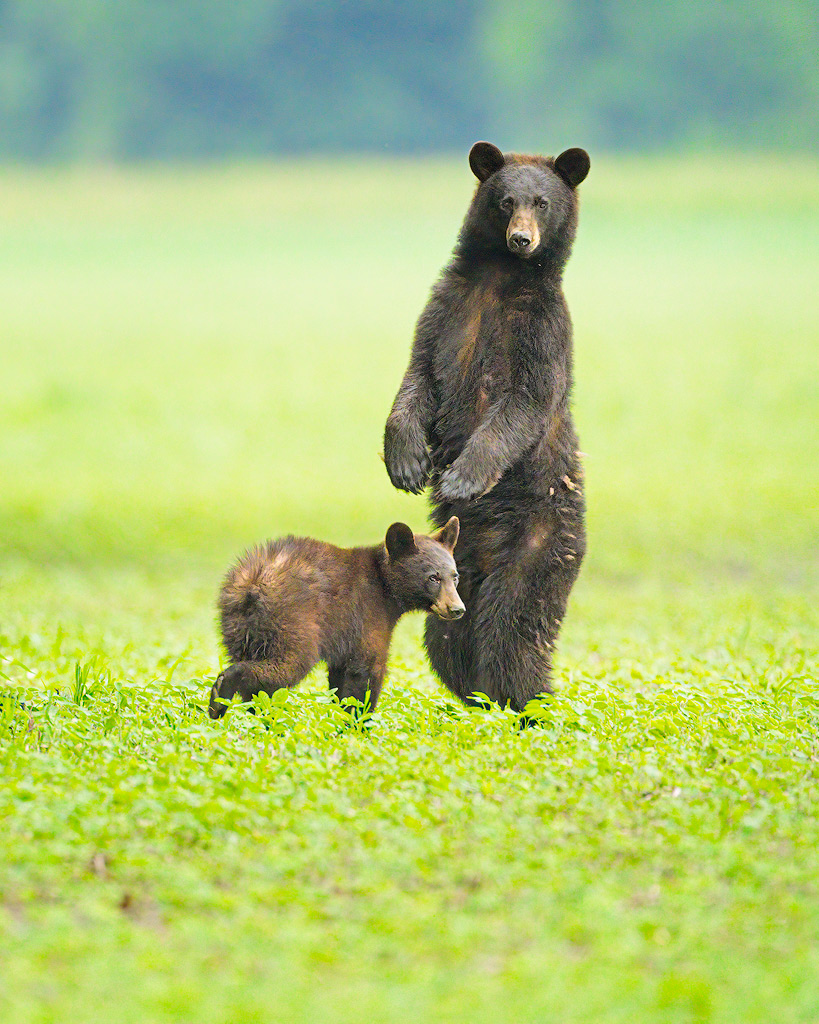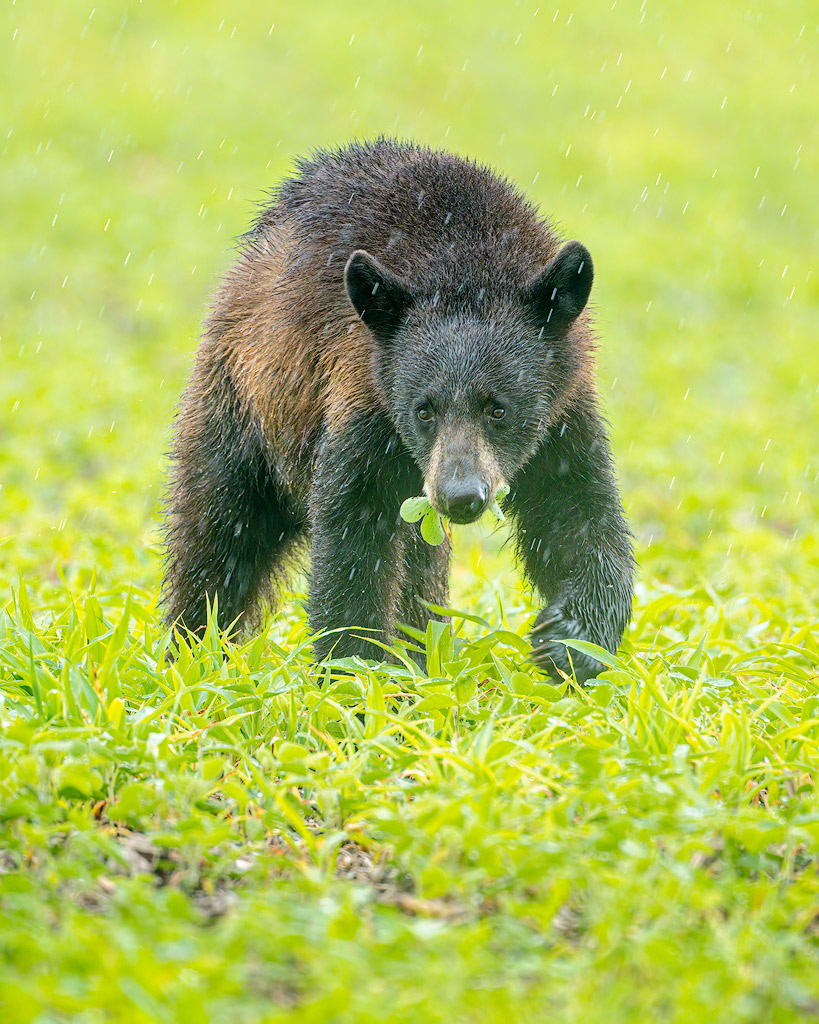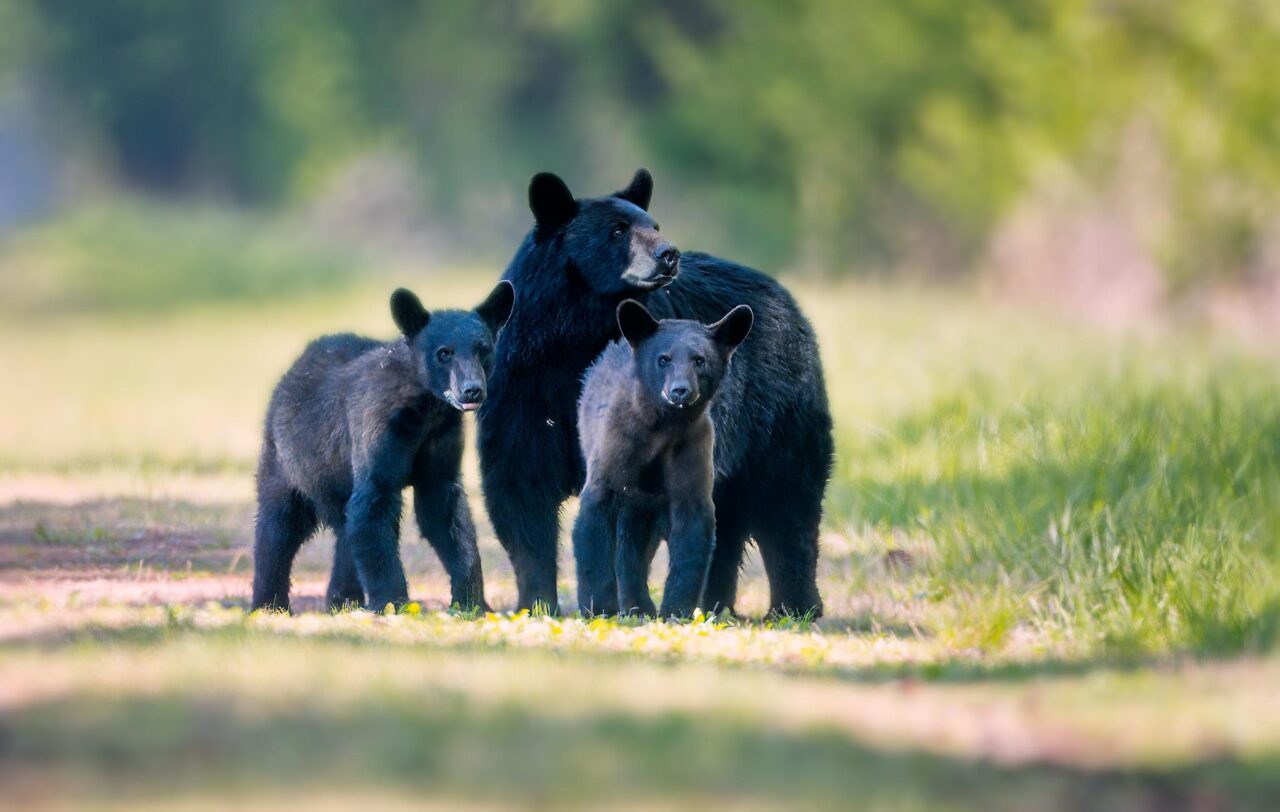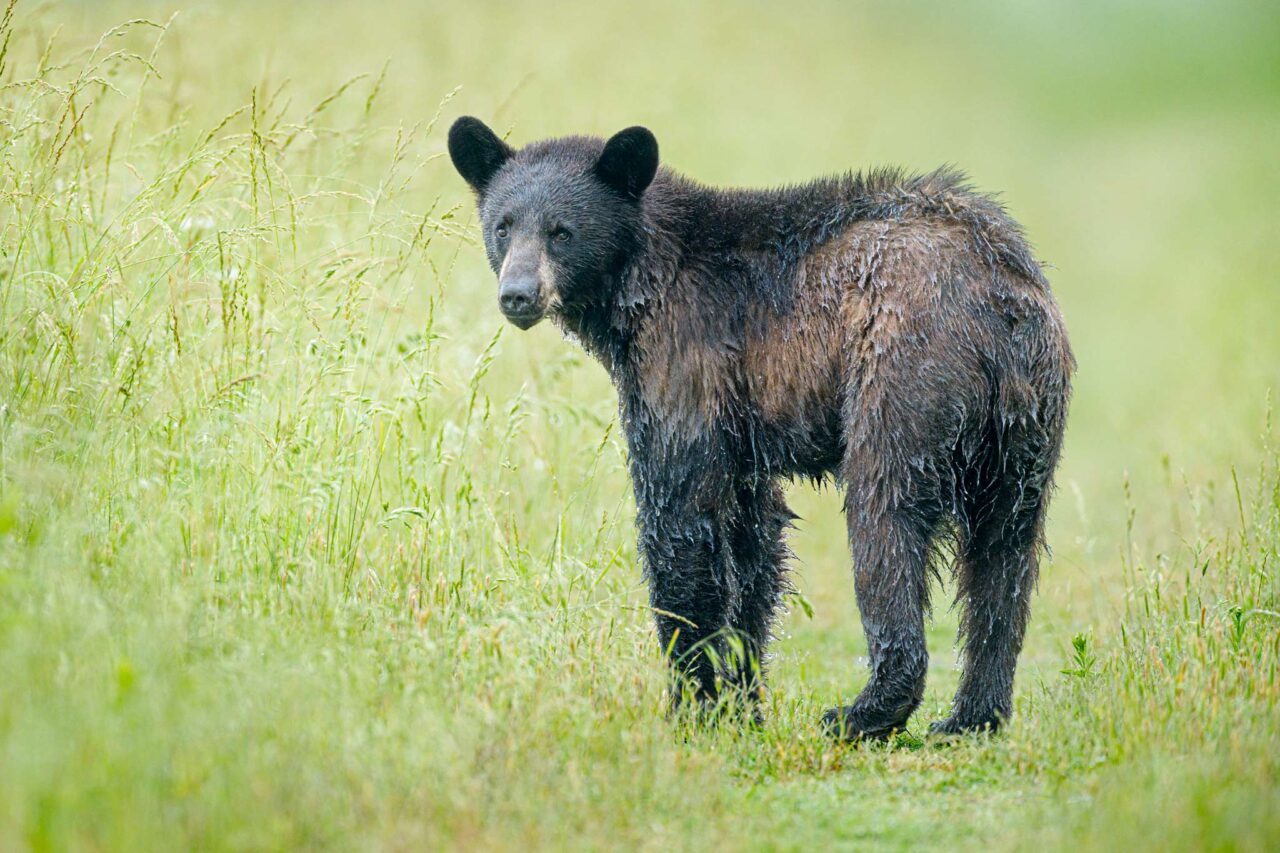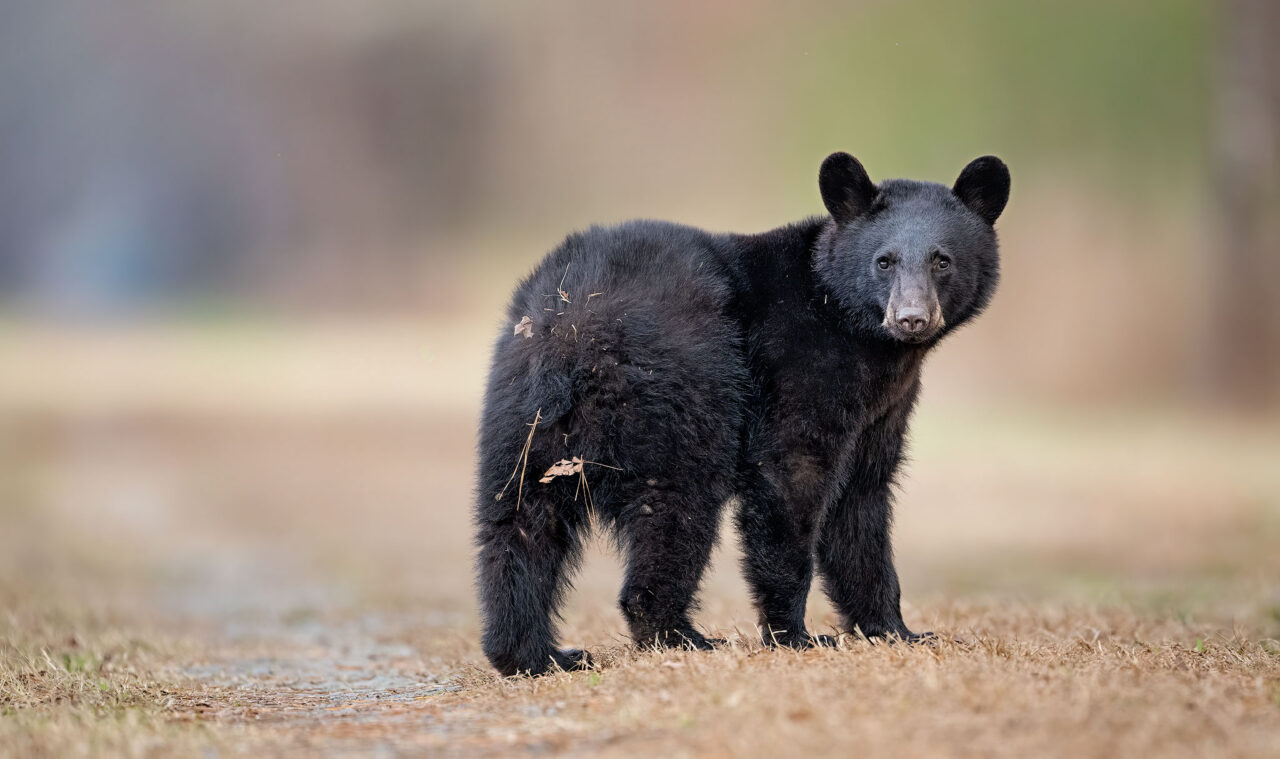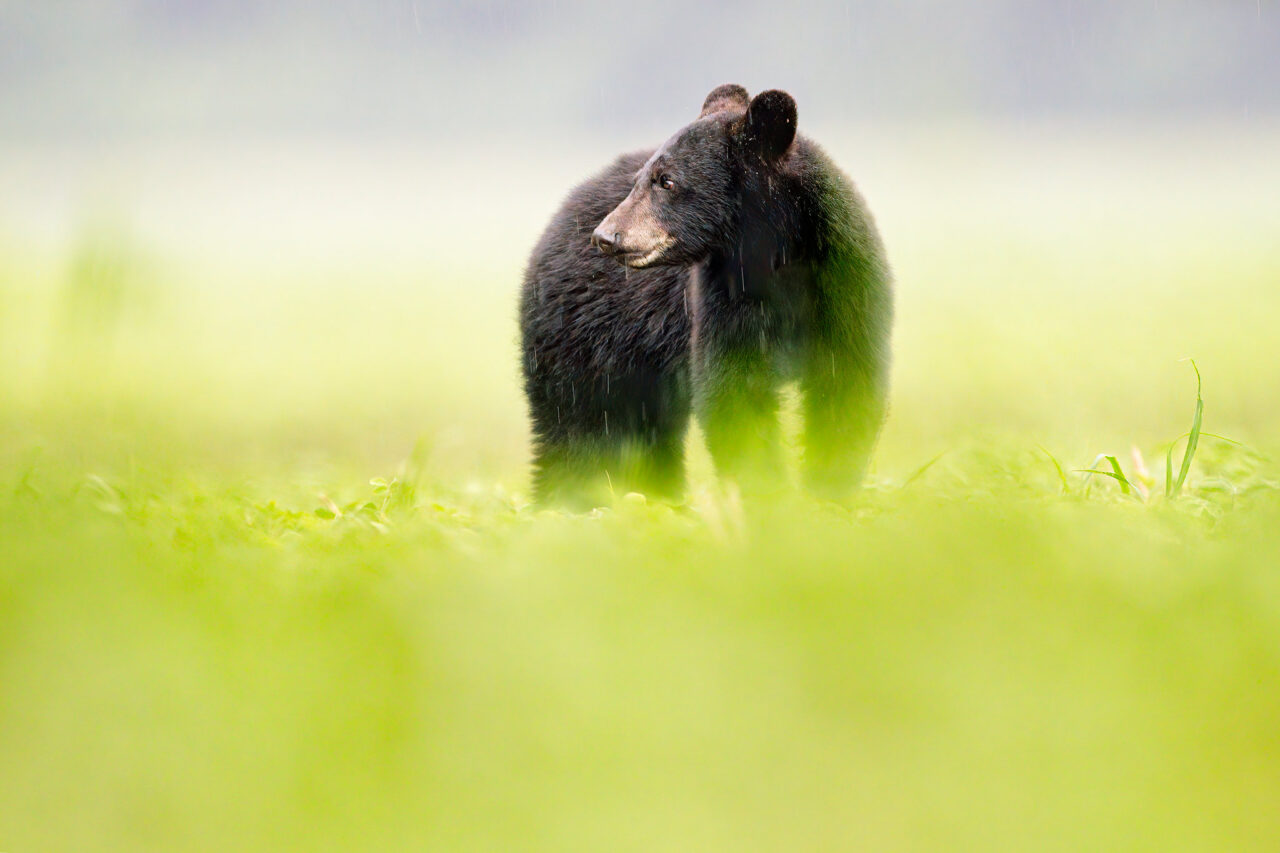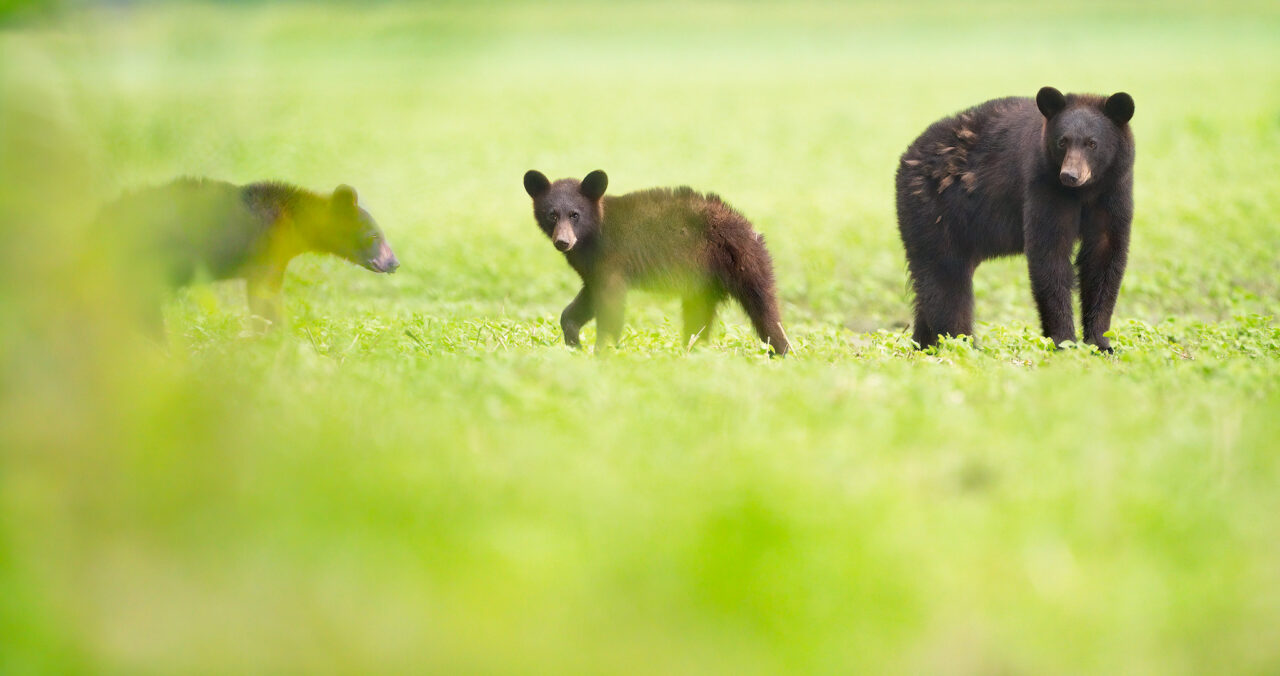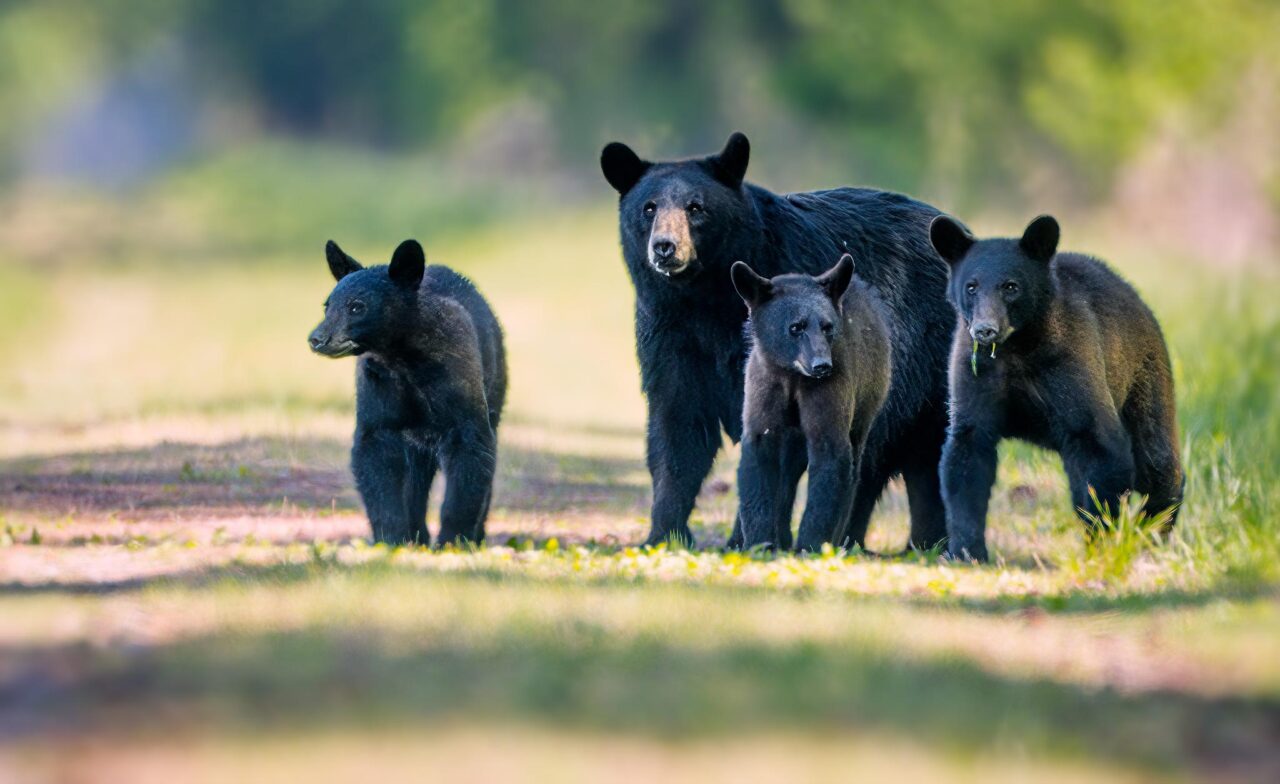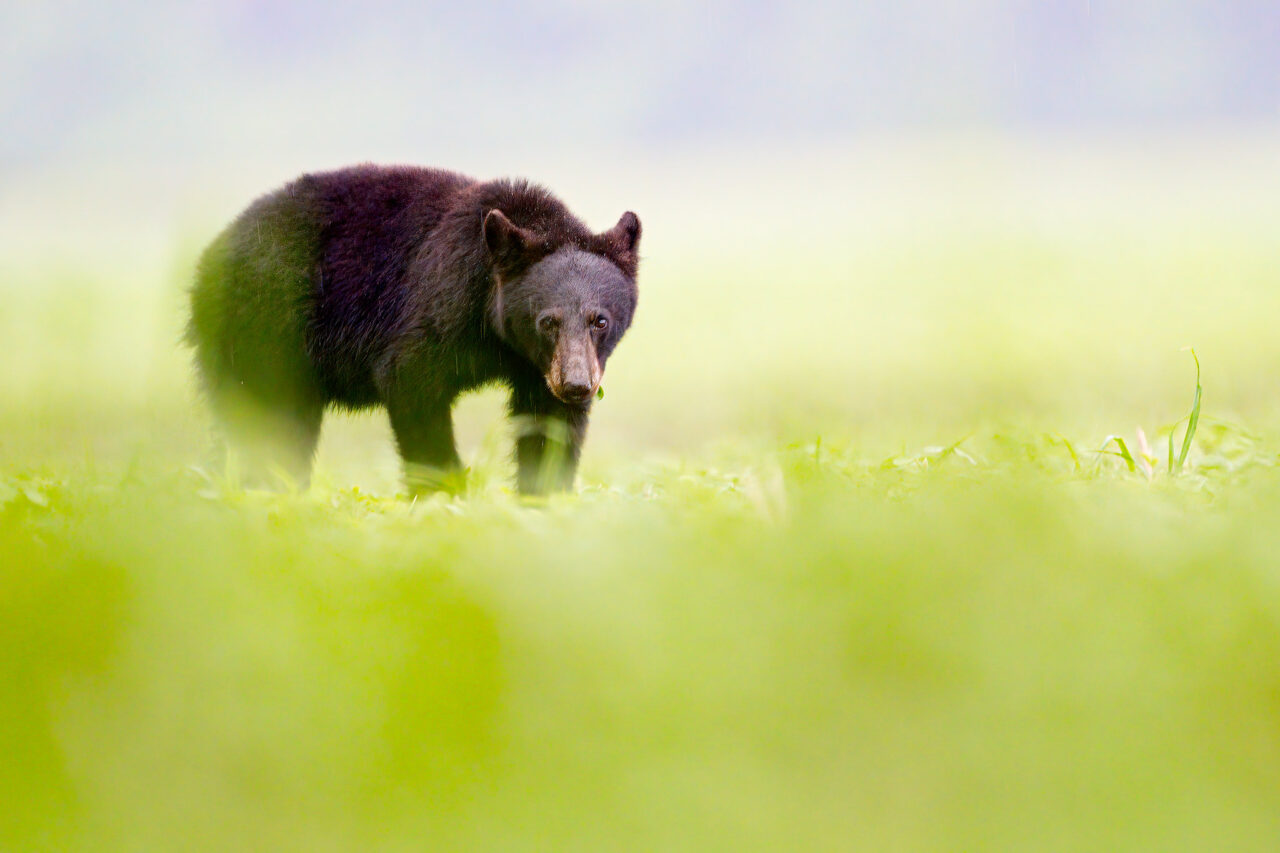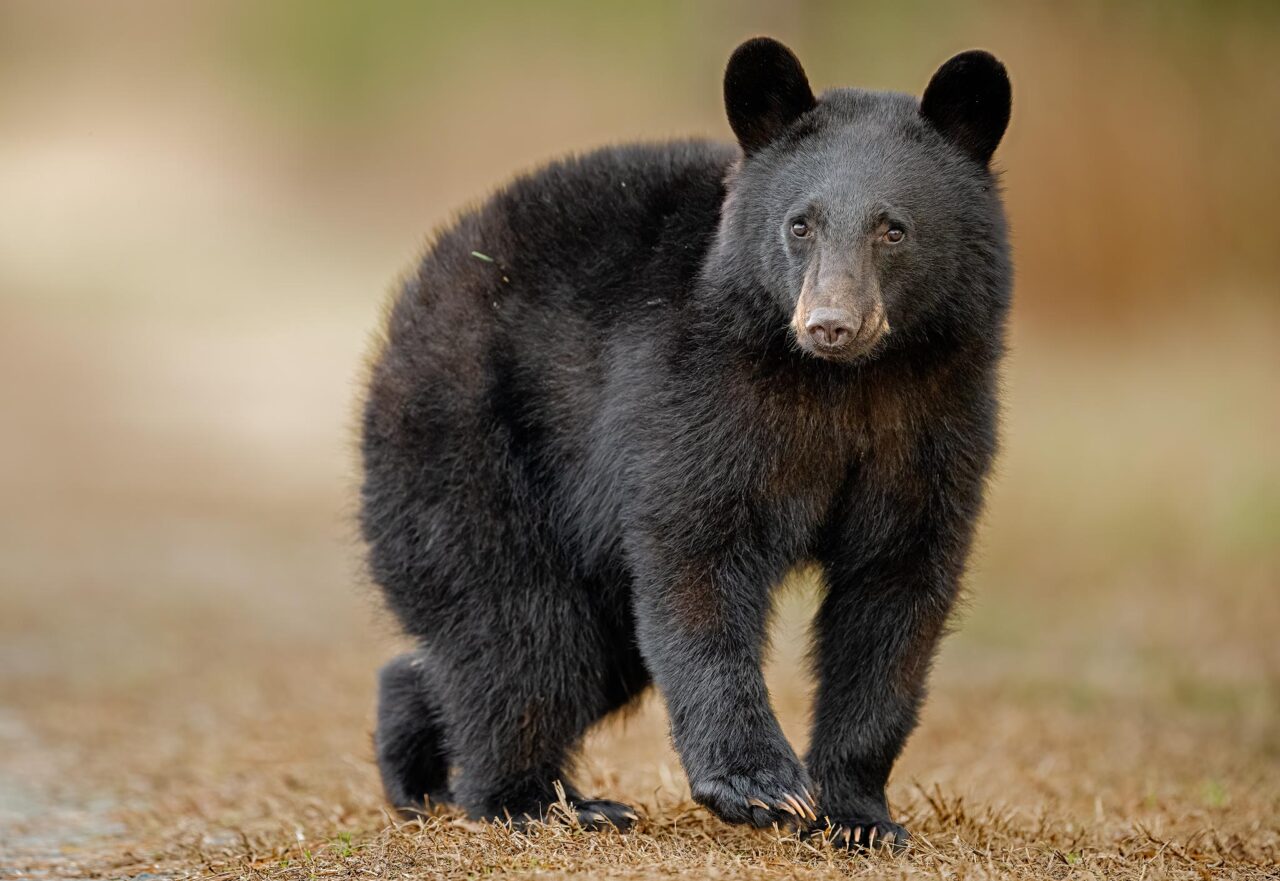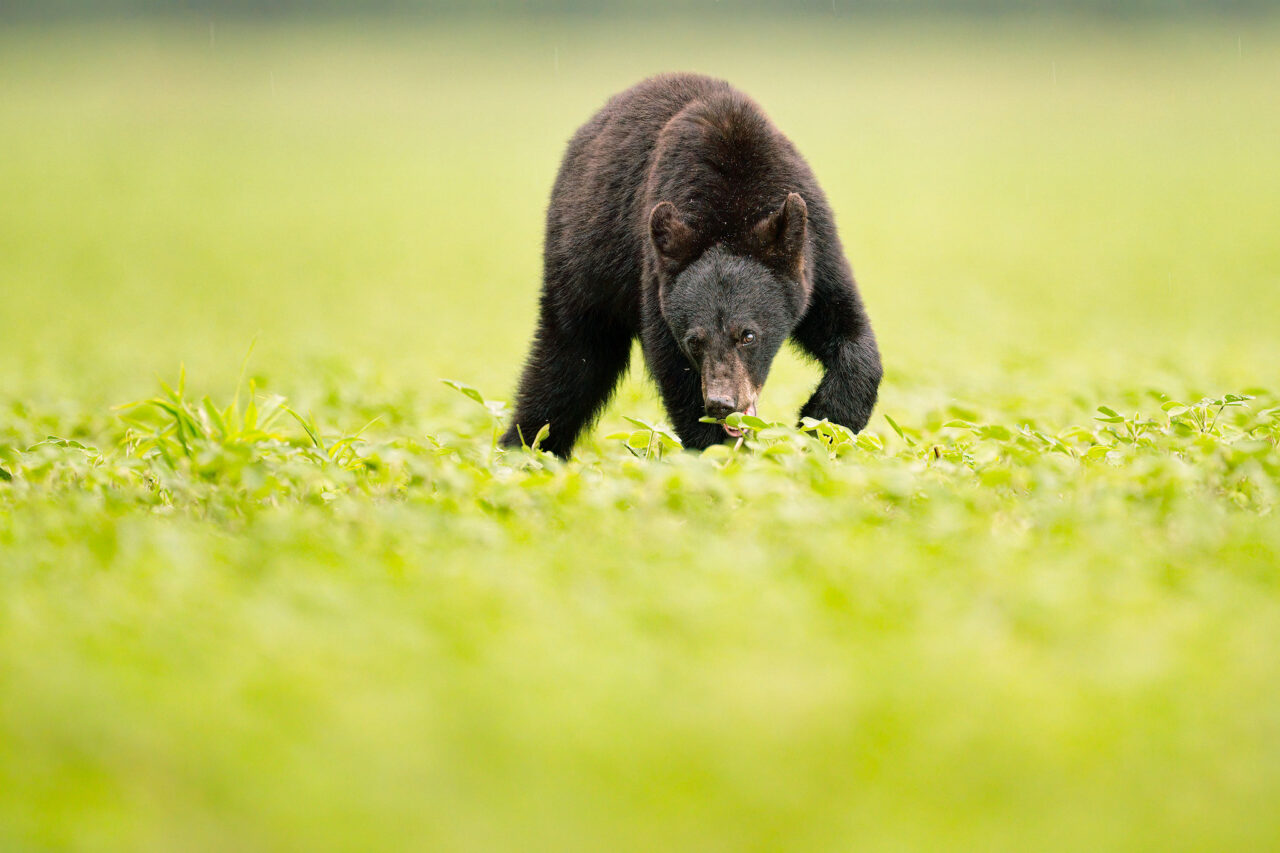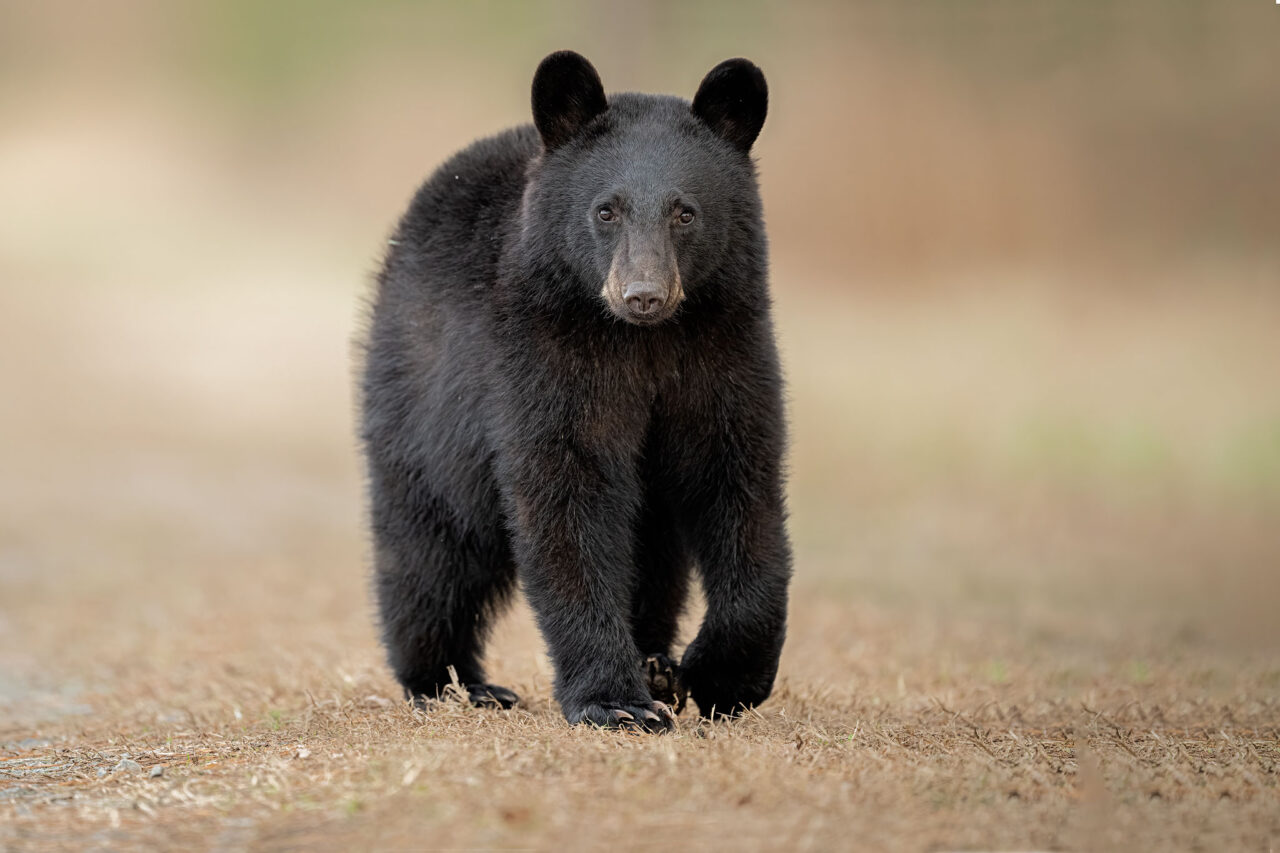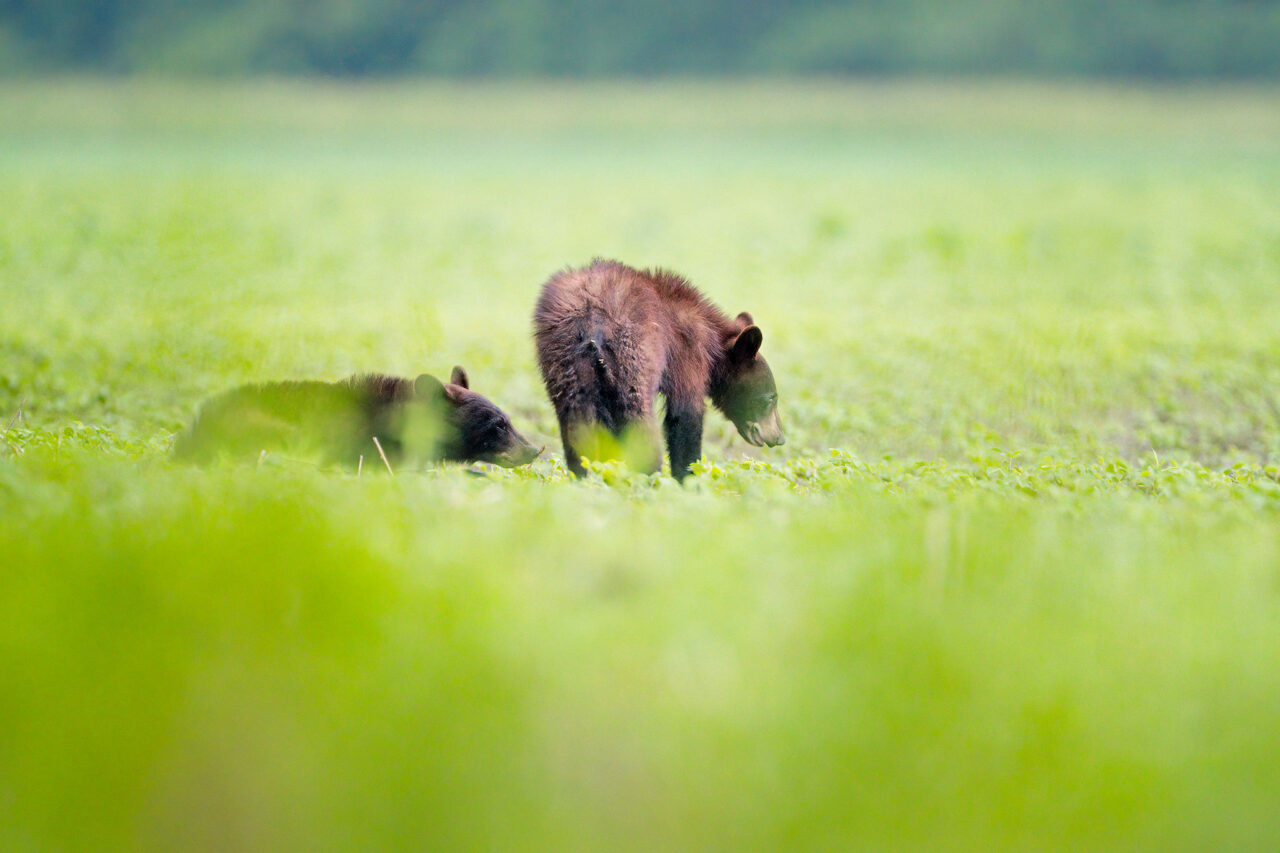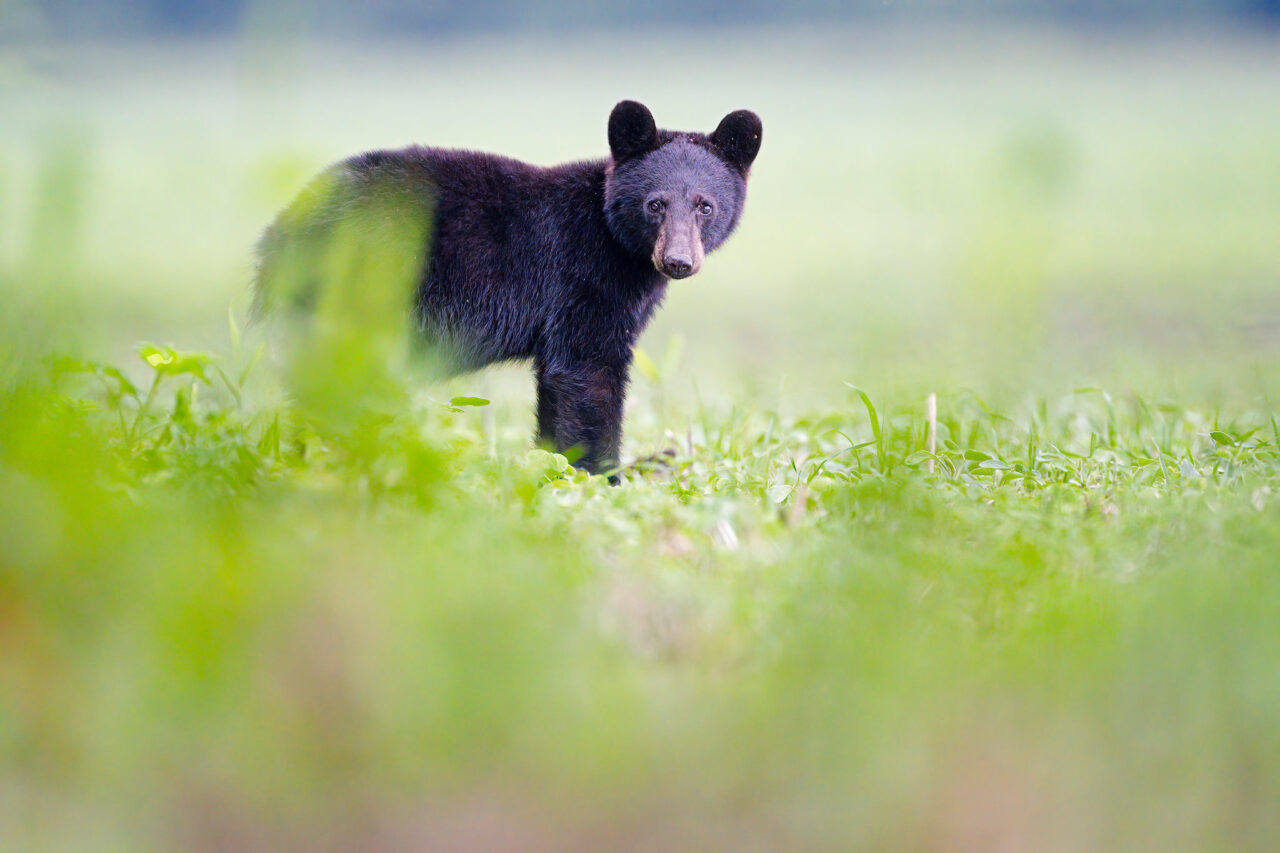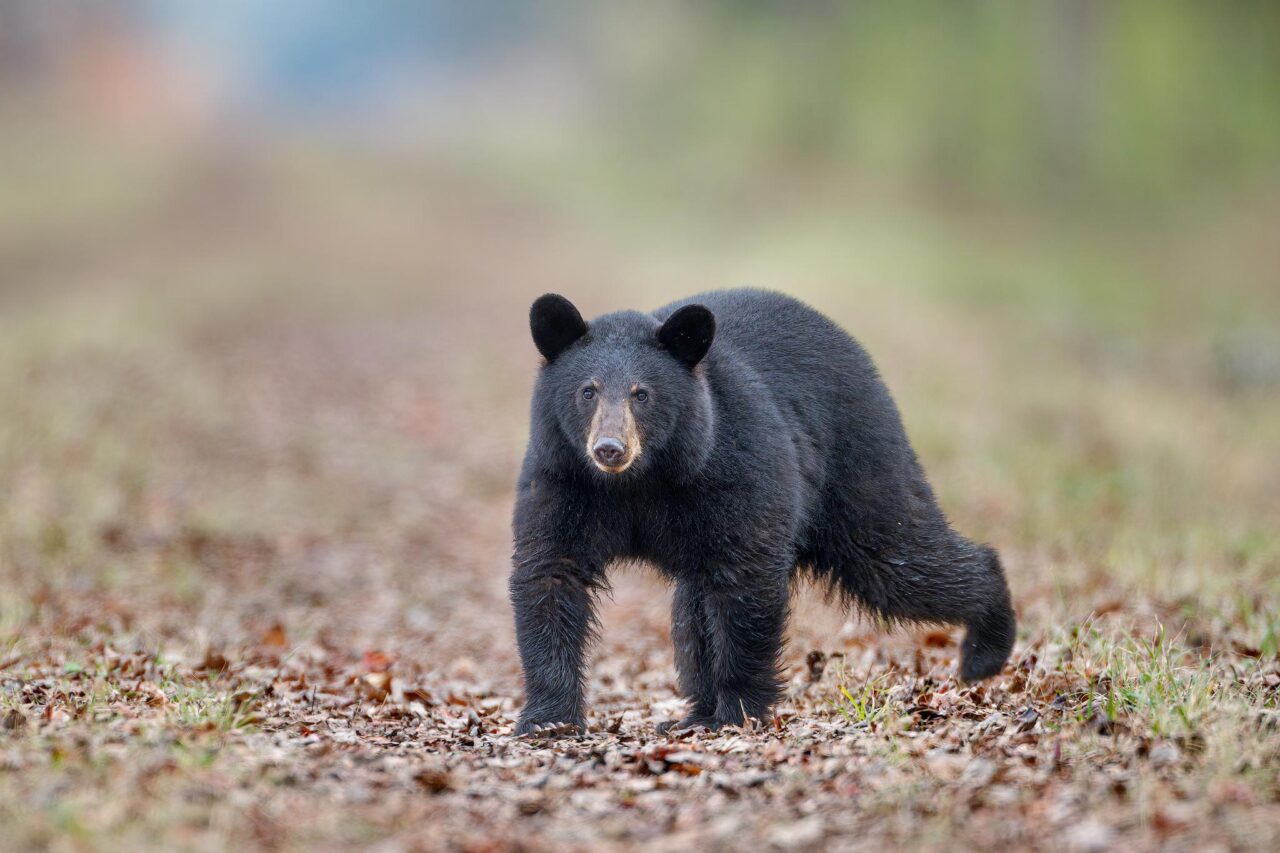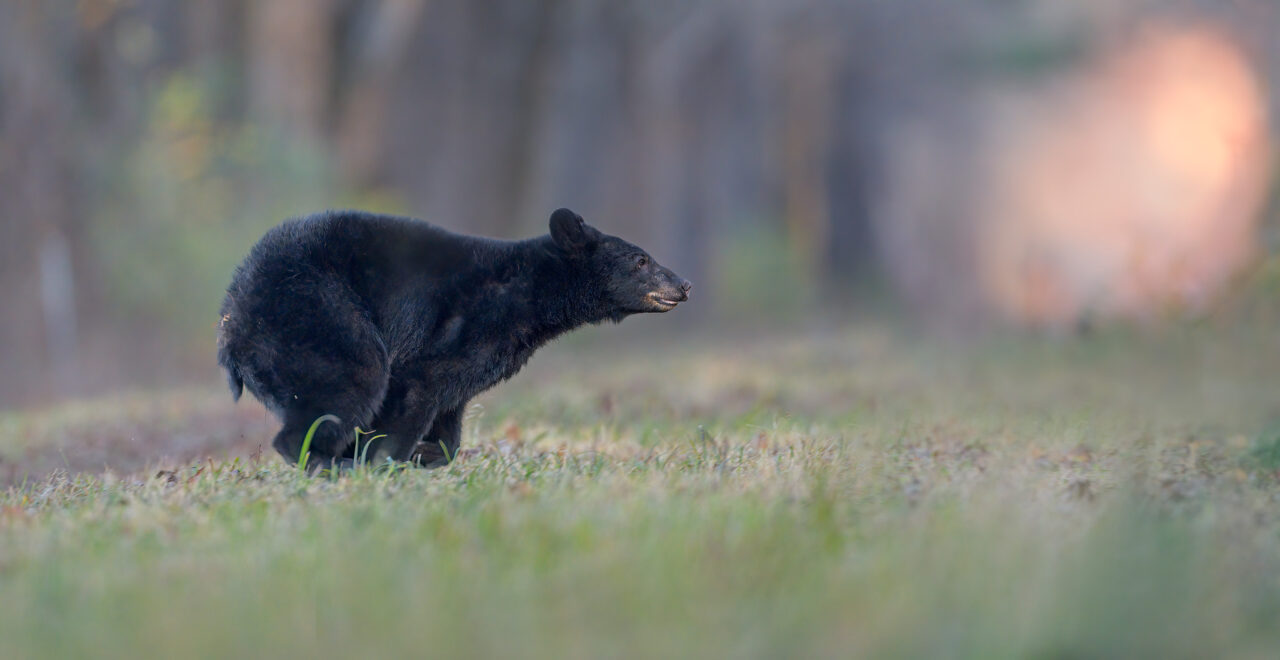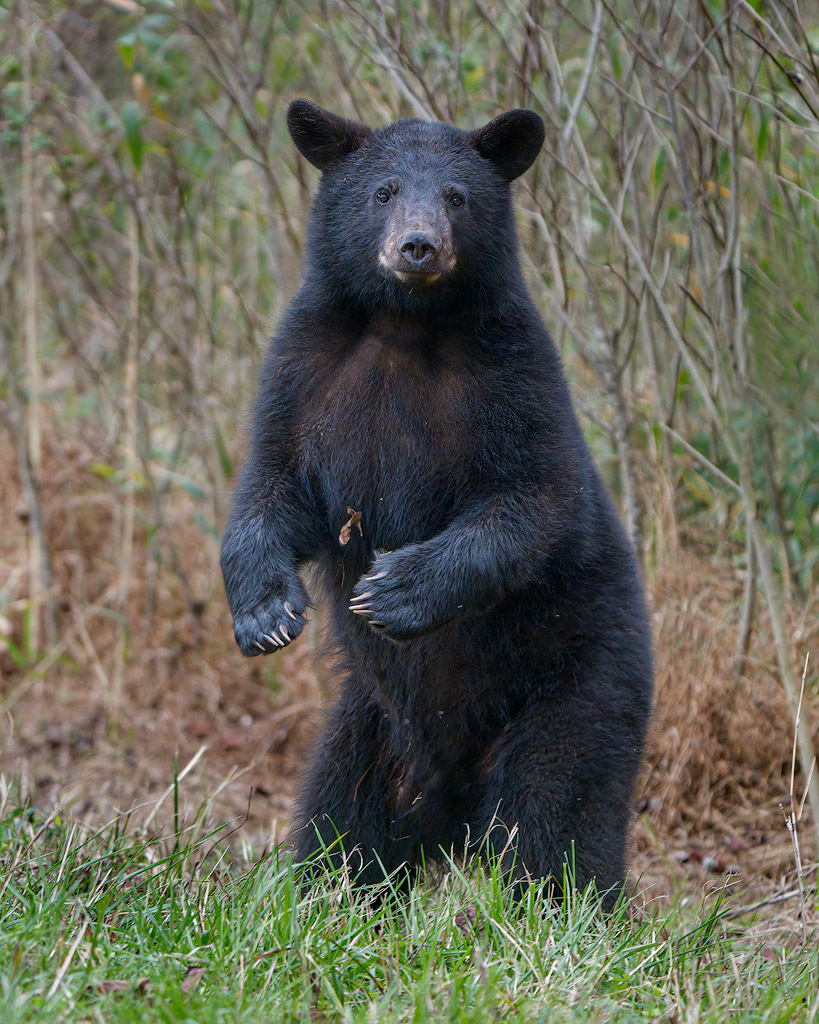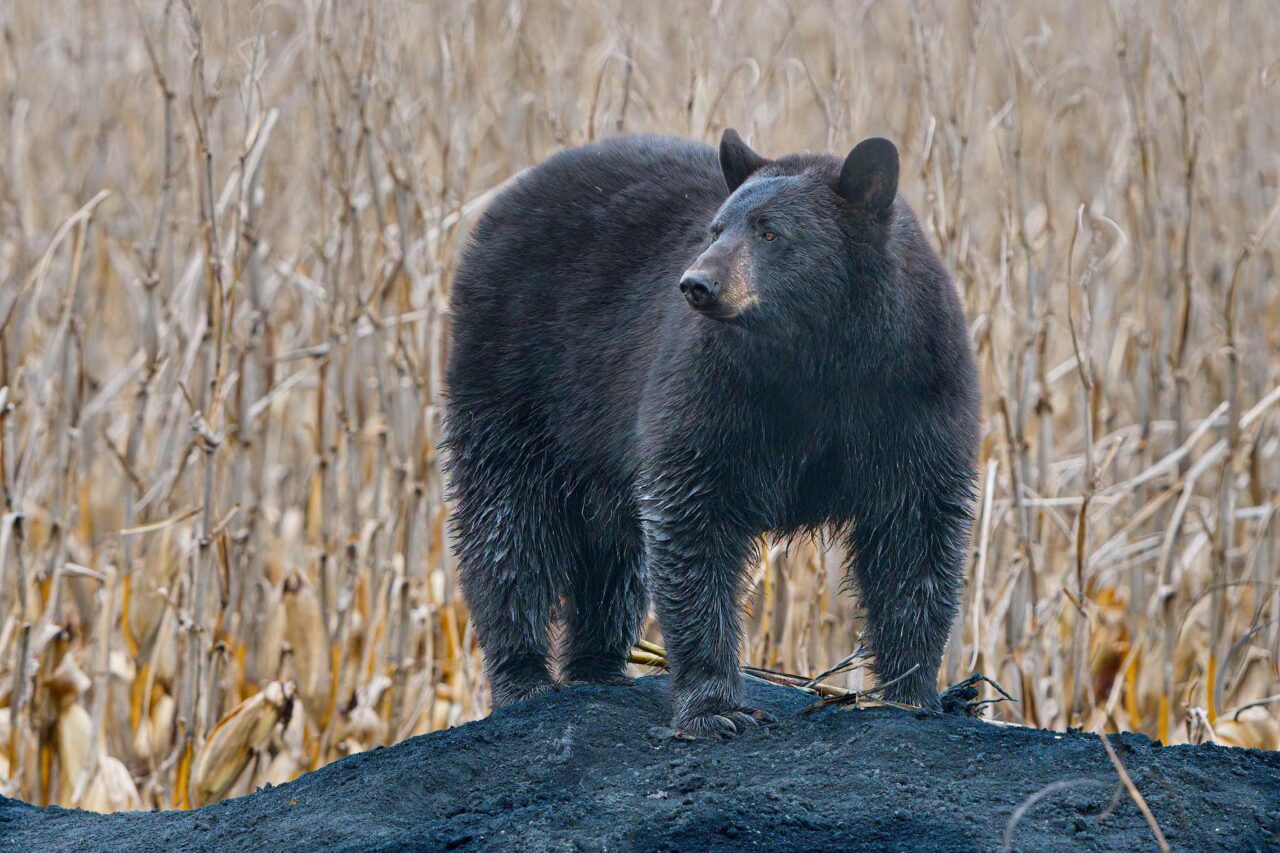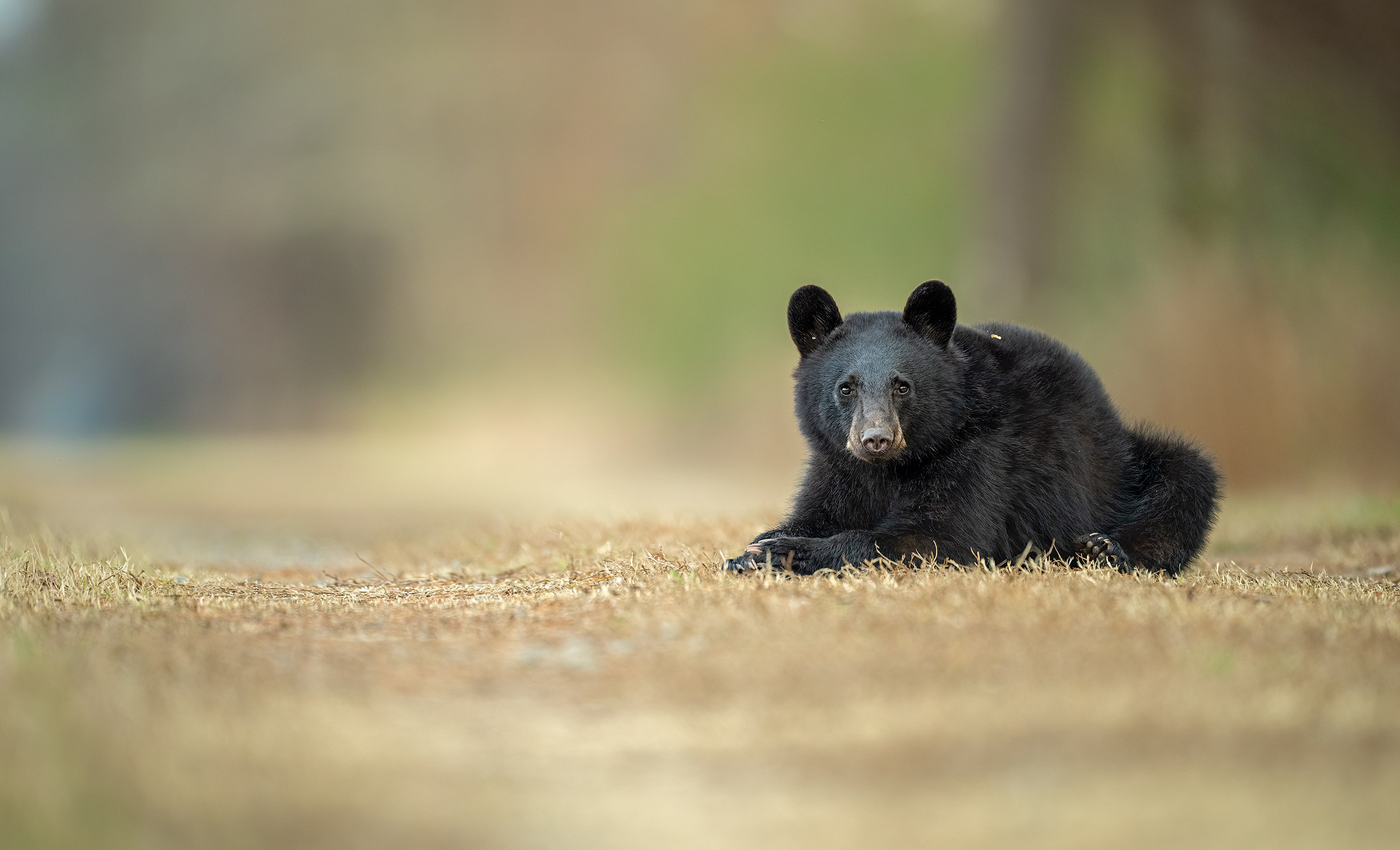I made several trips this year to photograph the bears at Alligator River National Wildlife Refuge and Pocosin Lakes NWR. I captured some nice images, but overall did not have as much luck this year. In particular there were few bears active in the area where I saw the most activity last year. The previously active bear trails were no longer being used and were disappearing as new vegetation grew on the trails. I believe a major reason for the change was due to too many photographers visiting the area and the disturbance/harassment of the bears in the pursuit of photographs. This year I met people from New York, Ohio, Florida, Arizona and many other states who had traveled to the area to photograph the bears. The previous year, nearly all photographers I met were local residents. The area was often crowded with photographers on the weekends. Local photographers able to visit an area regularly seemed to have more patience with the bears. New photographers to the area, particularly those traveling from more distant locations, seemed to be more aggressive in their pursuit of a photograph, possibly because of the expense of travel and the likelihood that they will not be able to return as often.
If you plan on visiting the area to photograph black bears, I recommend a few guidelines.
Generally you will have your best luck if you allow the bears to approach you. If you see bears in the distance and decide to try to get closer, halt your attempt if you see the bear turn away from you or speed up. They are letting you know that they will not allow a close approach. Time and time again I saw photographers notice bears crossing a field heading back toward the woods and move toward them to try to get close for photographs. The bears would speed up and so would the photographers. Don’t chase the bears.
Use the longest lens you own. Add a teleconverter if necessary. The first image below was taken with a 600mm with 2x teleconverter. I added the teleconverter to the lens so that I would not have to approach the bear as it came out of the woods. If I had not had a teleconverter, I may have tried to slowly approach, but at the first sign that the bear was uncomfortable with my approach, I would have stopped.
Don’t get between a mom and her cubs. If you separate a mom from her cubs, she may abandon them. A situation where this may occur involves cubs that are in trees and the mom has gone to the fields to feed. The mom will be reluctant to return with several photographers blocking the way. If the photographers remain for a prolonged time, the sow may desert her cubs. I personally witnessed this once when a sow and one cub went into the corn field to feed while another cub stayed in a tree. Photographers photographed the cub in the tree for a couple of hours. The sow and one cub eventually left the area by another route. Black bears are not aggressive by nature and the common thought that sows are very aggressive and protective of their cubs is false. Researcher Al Erickson noted that “Most female bears did not display strong maternal protective instinct and quickly abandoned cubs when danger was imminent.” The presence of photographers around the cubs will may keep a sow away.
In an online article entitled How Dangerous are Black Bears, Dr. Lynn Rogers writes “A big revelation to me was how reluctant black bear mothers are to defend their cubs against people, even when the family is cornered in a den and I’m trying to stick the mother with a needle to tranquilize her. Defense of cubs is more a grizzly bear trait.”
Dr Rogers has been researching black bears since 1967. He and other bear biologists regularly tag the ears of cubs they capture in dens, trees, or out in the open. The sows will woof, threaten and sometimes charge to within 20 feet, but generally move off and wait until the biologists are through.
Dr. Rogers, in a quote from the 1994 book, The Great American Bear, has described his experiences with “bear aggression” :
“Bears charged or lunged at me. Bears I thought were drugged in dens sometimes turned out to be inhospitable. Bears in culvert traps slapped at the peepholes when I looked in. I thought I was having close calls and I remained cautious. But over the years I realized that not one of my ‘close calls’ had ended in contact. Charging bears always stopped, even when I was capturing their squawling cubs. Threatening bears always ran when I jumped at them or threw rocks. Furious bears in culvert traps became suddenly timid when I opened the door for them to escape, exiting only when they saw an escape route that was clear of people.”
Researcher Any Russell has described the difference in aggression between black and grizzly bears as ” To compare him (the grizzly) with his lesser cousin, the black bear, is like standing a case of dynamite beside a sack of goose feathers.” His quote was in Dr. Stephen Herrero’s 2018 book Bear Attacks: Their Causes and Avoidance.
Bear attacks that result in serous injury or death, although very rare, do occur, so caution is always needed. Most actual black bear fatalities have usually involved hungry bears who see humans as prey. In these predaceous attacks, the hunger may be due to failure of food crops, illness or injury. In very remote areas, it may be that bears have rarely encountered humans and have no fear of them. In predaceous attacks the bear is stalking its intended victim. It may be noticed quietly circling around the prey to sneak up from behind. I always carry bear spray with me.
Most non-serious attacks by black bears are defensive in nature. Humans have invaded their space and the bears simply want to drive them away or give themselves time to retreat. The contact is often accidental or incidental, the bears are simply trying to send a message. Unlike the predaceous attacks where the bear is quietly approaching its target, defensive attacks generally involve warning vocal and visual cues, such as woofs, huffs, chomping of teeth, swatting their paws against the vegetation or ground, and bluff charges.
There is evidence that black bear attacks are on the rise. Between 1900 and 1990, there were only 25 reported deaths due to black bear attacks in North America. In the decade of the 90’s, there were 11 deaths due to black bear attacks. Dr. Stephen Herrero, in his book, Bear Attacks: Their Causes and Avoidance, 2018, attributes the increase in attacks to black bears losing their fear of humans– bears that have become habituated to humans and conditioned to eat human foods. “Such bears will forage in campgrounds seeking out any edible garbage or inadequately stored food, even to the point of breaking into cars . . . Along roadsides they readily learn that begging leads to handouts unless feeding is strictly prohibited. Along some backcountry trails they have learned rob-and-run tactics that literally scare backpackers out of their packs. In rural and remote areas they quickly discover anything belonging to humans that is edible.”
To keep the above paragraph in perspective, it should be remembered that black bears are much more numerous than the more dangerous grizzly bears; estimates of 800,000 compared to 60,000. Human-black bear interactions are tremendously more common than human-grizzly bear interactions. Black bears are remarkably tolerant of humans and generally show great restraint in their interactions with humans. When one considers the frequency of human-black bear interactions, 36 fatalities in 100 years is a remarkably low number.
Below are my favorite images from 2022.
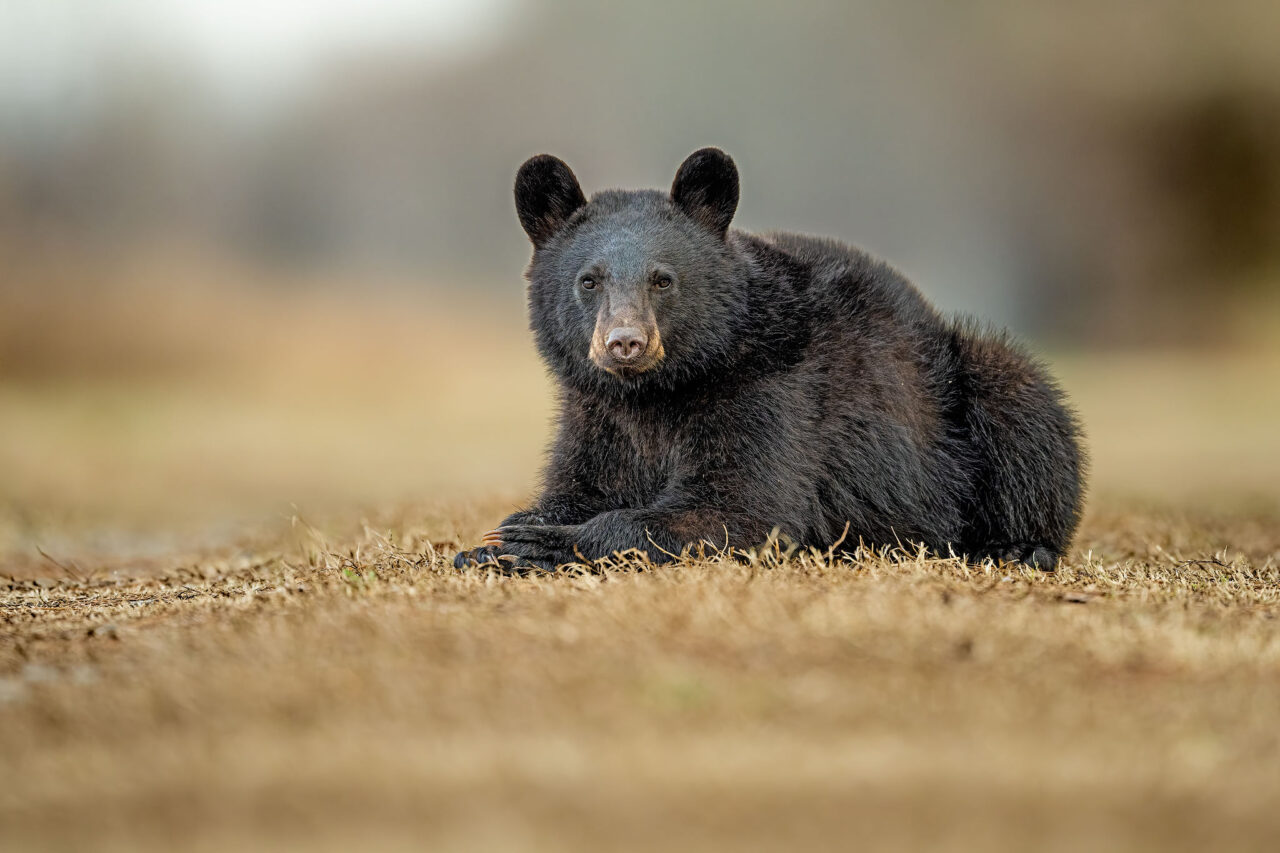

The bear above is the same bear in the first two images. He approached me and I was was able to get a head and shoulders portrait with the 600mm with 2x converter. After this image I backed away from the bear.
